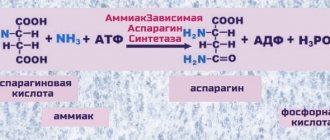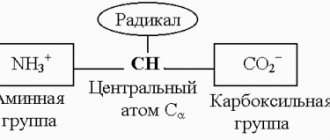Andrey Kiselev, Igor Karol “Nature” No. 11, 2015
About the authors
| Andrey Alexandrovich Kiselev — Candidate of Physical and Mathematical Sciences, Senior Researcher of the Department of Dynamic Meteorology of the Main Geophysical Observatory named after. A. I. Voeikova (St. Petersburg). Area of scientific interests: photochemical processes in the atmosphere. |
| Igor Leonidovich Karol - Doctor of Physical and Mathematical Sciences, professor, head of the laboratory of the same observatory. Specialist in the field of climate modeling, photochemical and radiation processes in the atmosphere. For many years he has been involved in the problems of atmospheric ozone. |
About 10 years ago, our article was published on the problem of atmospheric methane []. In particular, it expressed the belief that increased interest in this topic will continue in the future. This conclusion was obvious and did not require special insight, so it is not surprising that it was confirmed. Indeed, throughout this time, methane has continued to be both the subject of extensive intensive research and a number of policy decisions. In short, a lot of new and, in our opinion, interesting information has accumulated, which we would like to present to the attention of the readers of Priroda. However, first things first.
Methane (CH4) is one of the main greenhouse gases “responsible” for global warming, which has been widely discussed in recent years. The contribution of atmospheric methane to it is second only to the contribution of CO2 [, ]. At the same time, the CH4 molecule “works” on global warming significantly, tens of times, more effectively than the carbon dioxide molecule. Measurements show that since pre-industrial times, methane concentrations have increased by about 150%, while CO2 concentrations have increased by only 40%. Therefore, the role of CH4 as a greenhouse gas is constantly increasing. It is worth adding that an increase in methane content contributes to an increase in the concentration of another greenhouse and life-sustaining gas - ozone - both in the troposphere [] and in the stratosphere []. B o
The majority of atmospheric methane is of biogenic bacterial origin. It is not formed chemically. Therefore, the flow of natural methane into the atmosphere is completely controlled by its flows from the earth’s surface. The main natural sources of CH4 are wetlands, freshwater bodies, the ocean surface, as well as termite colonies and biomass burning due to fires. Anthropogenic activities are associated with methane flows into the atmosphere during the extraction of fossil fuels, from landfills for household waste and garbage in landfills, during wastewater treatment, expansion of agricultural land (rice plantations), cattle breeding, etc. The heterogeneity of methane sources is the main reason for the large errors in estimates of their intensity. The destruction of methane molecules occurs as a result of its atmospheric chemical reactions with hydroxyl (~90%, []) and atomic chlorine (above 35 km).
a brief description of
Natural methane is formed during the decay of the remains of living organisms. Translated from English, “methane” means “swamp gas”, as it is most often found in swamps and coal mines.
Almost 95% of the reagent appears as a result of biological processes. A fifth of annual gas emissions into the atmosphere come from goats and cows, whose stomachs contain bacteria that produce methane. It enters the atmosphere when cattle excrete waste products from their bodies.
Other sources of the substance are:
- termites;
- raw rice;
- swampy bodies of water;
- natural gas filtration;
- plant photosynthesis;
- volcanoes;
- long dead organisms.
Since the substance is usually associated with living organisms, scientists believe that its presence on the planet indicates the presence of life. So, when this gas was discovered in the atmosphere of Mars, experts began a thorough study of the planet specifically for the existence of living organisms. But further research showed that there is much more methane on the distant planets of the solar system, although there it appeared as a result of chemical reactions.
On Earth, the substance seeps through cracks in the earth's crust located on the ocean floor, and is released in large quantities during mining and forest fires. In addition, scientists have recently discovered a new source of gas that has never been considered in this way before.
***
The fact that 105 countries have agreed to reduce methane emissions by a third by 2030 is a very important step. Even though many environmental organizations criticized the decisions, calling them insufficient. We can only hope that Russia, one of the world's leading methane emitters, will also soon join the agreement. The sooner politicians in Russia, China and India come to understand the importance of limiting methane emissions, the better our chances of emerging from the climate crisis.
How carbon capture and storage technologies work: the industrial revolution in reverse
Physical qualities
Methane is the simplest hydrocarbon. It is believed that it has a specific smell, but this is a common misconception. Pure gas is odorless; it acquires its characteristic aroma thanks to special additives that are added to the substance to warn of its leakage, because the chemical compound also has no color.
In addition, the physical properties of methane include:
- Burning with a blue flame.
- Combustion without releasing harmful products.
- Poor solubility in water.
- It is lighter than air.
- The main component of natural, associated petroleum, mine and swamp gases.
- Boiling at -161 °C.
- Freezing at -183 °C.
- The molar mass is 16.044 g/mol.
- Density - 0.656 kg/m³.
- When combined with air, explosive mixtures are formed.
- In liquid form it is a colorless, odorless liquid.
The most dangerous is methane, which is released during underground mining, as well as in factories involved in the processing and enrichment of coal. When the amount of gas in the air reaches 5-6%, it begins to burn near heat sources.
If the level of the substance rises to 14-16%, an explosion may occur. As the concentration increases, the substance burns with a constant supply of oxygen. If at this moment the amount of methane begins to decrease, then the result may also be an explosion. During an explosion, the fire, fueled by gas, moves at a speed of 500 to 700 m/sec. The pressure of the substance at this moment in a closed space is 1 Mn/m2.
Upon contact with a heat source, methane ignites with a short delay. This property of the substance is used in the manufacture of safety explosives and electrical equipment safe from explosions. At all facilities where there is a danger of methane emissions, “gas mode” safety regulations apply.
Chemical properties
In chemistry, the formula for methane is CH4. The compound does not enter into chemical bonds well.
Under normal conditions it does not react with the following substances:
- concentrated acids;
- molten and concentrated alkalis;
- alkaline metal reagents;
- halogens;
- potassium permanganate;
- potassium dichromate in an acidic medium.
At a temperature of about 200 °C and a pressure of 30 to 90 atmospheres, swamp gas is oxidized, transforming into formic acid. The substance forms compounds called gas hydrates, which are often found in nature.
In its chemical properties, methane is similar to other reagents related to alkanes. Therefore, it enters into chemical reactions such as:
- Conversion to synthesis gas. The synthesis gas that is formed as a result of this reaction is used to produce methanol, hydrocarbons, and so on.
- Halogenation. This reaction is a chain reaction. In it, a molecule of bromine or iodine is exposed to light and breaks down into radicals, which are then attacked by methane molecules. As a result, a hydrogen atom is removed from the compound, and the gas becomes free methyl CH3. The resulting substance collides with bromine or iodine molecules, which are destroyed, forming new radicals of these reagents.
- Nitration.
- Oxidation or combustion. This reaction occurs when there is an excess of oxygen and is described by the following equation: CH4 + 2O2 → CO2 + 2H2O. In this case, the flame is blue. If there is not enough oxygen, the reaction results in the production of carbon monoxide rather than carbon dioxide. If there is even less oxygen, then the interaction of substances will lead to the release of finely dispersed carbon.
- Sulfochlorination.
- Sulfonic oxidation.
- Decomposition.
- Dehydrogenation.
- Catalytic oxidation. In such reactions, carboxylic acids, alcohols, and aldehydes are formed from swamp gas.
Treatment
First aid involves immediately removing the victim to fresh air. The victim must be freed from constricting clothing and warmed up by covering the body with heating pads. If breathing is difficult, give oxygen. If there is no breathing, immediately (before the doctor arrives!) perform artificial respiration using the mouth-to-mouth or mouth-to-mouth method. In case of severe poisoning, hospitalization is necessary.
In the hospital, oxygen barotherapy, dehydration therapy, administration of cardiovascular drugs and drugs that normalize metabolism are used, according to indications - hormone therapy, vitamin therapy, and infection prevention.
Obtained in industry and laboratory
In industrial conditions, the substance is obtained by heating carbon and hydrogen or synthesizing water gas. In order for the reaction to proceed successfully, a catalyst is used, usually nickel is used in this capacity. In the USA, to extract the simplest hydrocarbon, a special system is used that is capable of extracting the compound from natural coal. But methane is also released in the form of a similar product during the thermal processing of oil and petroleum products, coking and hydrogenation of coal.
In the laboratory, the following methods are used to obtain the substance:
- Reaction of sodium hydroxide with sodium acetate.
- Interaction of aluminum carbide.
- Heating soda lime with acetic acid. This reaction requires an anhydrous environment, and therefore it uses sodium hydroxide, which is the least hygroscopic.
Natural gas liquefaction technology
Pure methane is obtained from natural gas by removing other components from it: ethane, propane, butane and nitrogen. To obtain liquid methane, the gas is compressed and then cooled. The liquefaction process is carried out in cycles. At each stage, the volume will decrease up to 12 times. It turns into liquid in the last cycle. Various types of plants are used for liquefaction, including:
- throttle;
- turbine-vortex;
- turboexpanders.
The following schemes can be used:
- cascade;
- expansion.
The cascade design uses three cooling agents. In this case, the temperature of liquid methane decreases gradually. This technology requires large capital expenditures. Currently, this process has been improved and a mixture of refrigerants (ethane and propane) has been used. This scheme has become self-cooling, since these substances are obtained from liquefied natural gas. Costs have decreased slightly, but still remain high.
When using an expansion circuit, more economical centrifugal machines are used. The mixture is pre-cleaned from water and other contaminants and liquefied under pressure due to heat exchange with a cold expanded gas flow. However, this process requires more energy than with a cascade scheme (25-35%). But at the same time, capital costs for compressors and equipment operation are saved.
The temperature of liquid methane obtained as a result of the process described above averages 162 degrees.
Application of methane
Swamp gas is the most thermally stable hydrocarbon, and therefore it is widely used both in everyday life and in industry. Chlorination of a substance makes it possible to obtain methyl chloride, methylene chloride, chloroform, and carbon tetrachloride. The result of its incomplete combustion is soot. If methane is catalytically oxidized, formaldehyde is obtained. And its reaction with sulfur leads to the formation of carbon disulfide.
Important methods for producing acetylene from the simplest hydrocarbon include:
- thermal oxidative cracking,
- electrocracking.
The gas is also used to produce hydrocyanic acid. In addition, it provides the hydrogen necessary to produce water gas, which in turn is used to create hydrocarbons, aldehydes and the like. In addition, methane is necessary in the production of nitromethane.
Nowadays, gas is often used as a vehicle fuel. But its density is 1000 times less than the density of gasoline, and therefore, in order to fill a car with methane to the same volume as gasoline, at equal pressure, an appropriate tank is required. In this case, a normal trip would require transporting a trailer with fuel.
Scientists solved this problem by increasing the gas density to 200-250 atmospheres. The compressed substance is pumped into special cylinders installed on specially designed vehicles.
Links
Alkenes Ethylene • Propene • Butenes • Pentenes • Hexenes • Heptenes • Octene Alkynes Acetylene • Propyne • Butine Dienes Propadiene • Butadiene • Isoprene • Cyclobutadiene Other unsaturated Vinylacetylene • Diacetylene • Carotene Cycloalkanes Cyclopropane • Cyclobutane • Cyclopentane • Cyclohexane • Cyclooctane • Decalin • Indane • Indene Aromatic Benzene • Toluene • Dimethylbenzenes • Ethylbenzene • Propylbenzene • Cumene • Styrene • Phenylacetylene • Indane • Diphenyl • Diphenylmethane • Triphenylmethane • Tetraphenylmethane • Indene Polycyclic Naphthalene • Anthracene • Benzanthracene • Pentacene • Phenanthrene • Pyrene • Benzpyrene • Azulene • Chrysene
Greenhouse effect
Methane is one of the gases that creates the greenhouse effect on the planet. To measure the level of its greenhouse activity, it is necessary to take as a unit the measure of the impact of carbon dioxide on the climate of our planet. With this ratio, the influence of methane will be equal to 23. Experts in the field of studying the greenhouse effect note that the amount of this gas in the earth’s atmosphere has increased significantly over the past two centuries.
The volume of methane in the modern atmosphere averages 1.8 parts per million. This amount is 200 times less than that of carbon dioxide. It should be noted that the molecules of the compound dissipate and retain the heat emitted by the sun-heated planet much better than the molecules of carbon dioxide. And it should also be noted that hydrocarbon absorbs terrestrial radiation in those spectral regions that freely pass through other gaseous compounds, creating a greenhouse effect.
But nevertheless, the planet needs such gases. Without carbon dioxide, water vapor, methane and other components of the atmosphere, the temperature on the Earth's surface would be well below the average 15 degrees Celsius.
Effect on the human body
A person can become poisoned by inhaling methane during an industrial accident or due to improper handling of devices operating on this gas. This situation is also possible during a long stay in a swamp or in a mine. If the concentration of a substance in the air is 20 percent or more, then poisoning can be very severe, even fatal.
Workers in chemical plants, mines and mines are susceptible to another form of hydrocarbon poisoning. Often these people regularly inhale small doses of the substance over a long period of time.
In addition, chronic intoxication can occur due to intestinal diseases, for example, dysbiosis. In such cases, methane is formed in the patient’s body in increased quantities. This gas will not cause serious intoxication, but it can still cause various disorders in the body, lead to gastrointestinal discomfort and a general deterioration in well-being.
Acute methane poisoning can be distinguished by the following signs:
- dizziness;
- noise in ears;
- drowsiness;
- general weakness;
- loss of coordination;
- speech disorder;
- pain in the eyes;
- lacrimation;
- suffocation;
- increased heart rate;
- lowering blood pressure;
- nausea;
- bouts of vomiting;
- cyanosis of the skin and mucous membranes.
If the poisoning is severe, the person loses consciousness, convulsions begin, followed by coma. It is also possible to stop breathing and heartbeat.
If methane poisoning is chronic, the victim suffers from frequent headaches, general malaise, low blood pressure and decreased performance. The person becomes pale and lethargic, experiencing a loss of strength. Hypotension can cause fainting. And exhaustion of the nervous system is also possible, which is expressed in increased irritability, nervousness, and the like.
Methane is known as one of the most dangerous gases. It is toxic, flammable and explosive. The substance has neither color nor odor, and therefore it is extremely difficult to detect it in the air. In order not to endanger your health and life, you should pay attention to safety precautions and be careful when working or using methane at home.
Combined courses of Danabol
Considering the frequency of side effects from using the drug, athletes prefer to combine it with other types of anabolic steroids. The combined use increases the effectiveness of the Danabol course, reducing the likelihood of side effects due to different pharmacodynamics of the drugs.
Any combination involves a precise dose for each agent and a specific route of administration. An example of a combination would be methandienone for muscle growth and Winstrol to reduce side effects. You should consult a professional trainer and doctor about mixing different steroids.











